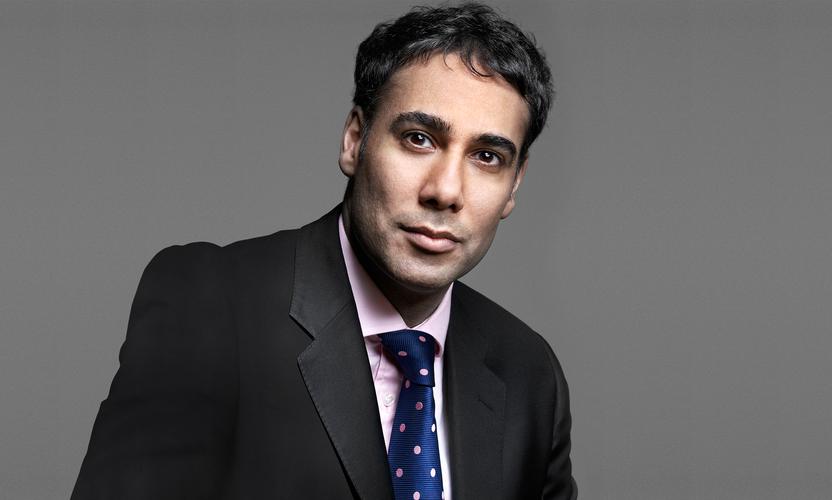Governance at the end of the cycle
When announcing a buyback, the executive team of a company will invariably claim that ‘it is the best use of capital at the time’. However, experience suggests otherwise and before accepting the management’s word, it pays to dig a little deeper - I look for the possible motives behind the decision, and whether it was influenced by business fundamentals, market levels or misaligned incentives.
When measured over a longer time horizon, governance decisions like Walmart’s buyback can play a critical role in determining the effectiveness of capital allocation and corporate strategy, as well as physical footprint (number of stores), corporate sustainability, and total shareholder return.
From neat theory to messy practice
In theory, there is an implicit contract between investors and company managers that is based on the idea that the interests of both parties are aligned. Managers are expected to make decisions designed to bring about increases in long-term shareholder value, which also leave a positive impact on society and the environment (or at least not a negative one).
The reality is often very different as corporate decision making can become distorted by an over-bearing focus on short term earnings and misaligned incentives (including the possibility of personal gains if executives can game their compensation plans). This is particularly visible at the late stage of business and market cycles, when there is a noticeable pick-up in speculative capex, buybacks struck at cyclically-high valuations and value destroying mergers and acquisitions.
A survey which suggested 80 per cent of CFOs would sacrifice critical R&D spend (required to sustain long-term business growth) just so they could meet quarterly earnings targets demonstrates just how overbearing the short-term focus on earnings can be .(1)
Add to this the revelation that CFOs themselves believe one in every five firms are guilty of misrepresenting their financial positions in company accounts and it is clear that investors have to exercise considerable caution . This is especially true at the late stage of the cycle when executives may be tempted to resort to aggressive accounting tactics to relieve the relentless pressure on them to beat quarterly earnings targets.
Governance decisions, shareholder headaches
CEOs have five main choices for deploying capital: 1) Invest in existing operations (capital spending and R&D); 2) acquire other businesses or divest assets (M&A activity or divestitures); 3) issue dividends; 4) pay down debt; 5) repurchase stock (share buybacks).
Contrary to what you might expect, cyclical factors and fashions greatly influence the shape of capital allocation over time. There is considerable variation in the use of different capital levers (see chart for US corporate sector). Capital spending will typically flex with the underlying business cycle but it has also generally drifted lower while spending on buybacks, a less risky and more shareholder friendly use of capital, has crept higher and has recently exceeded dividend spending for a record seventh year in a row. Notably, both share repurchases and M&A spending are pro-cyclical - increasing in the late 90s, mid 2000s and more recently, while contracting in the bear markets triggered in 2000 & 2008.
Chart shows percent of cash balance deployed for US investable universe ex financials and energy. Source: Credit Suisse HOLT, Fidelity International, 2018.
The complexities of capital allocation
Capital allocation is a dynamic process that is incredibly difficult to appraise. Good or bad decisions only become apparent after a significant time lag and the bad decisions may only become apparent in the light of counter-factuals (e.g. ‘what would have happened had we decided to invest 10 years ago instead of doing that M&A?’ A question that ex-RBS CEO Sir Fred Goodwin may still be pondering to this day after his purchase of an MBS-laden ABN Amro at the top of the market, which was instrumental in precipitating a government bail-out).
Sometimes acquiring makes sense and at other times divesting is the better alternative. There are times to issue equity and times to retire it. Often this will vary by industry and by individual firm. Yet in practice, trend following is evident. Why?
Warren Buffett suggests this is due to something called the institutional imperative; an unseen yet powerful force that causes executives to act sub-optimally. Buffet believes it is the institutional imperative that causes companies to mindlessly imitate one another whether it is in M&A or in executive compensation. The time that we see these corporate fashions and fads most prominently is, of course, at the end of the cycle.
Why are buybacks pro-cyclical?
In theory, buybacks should happen when a company believes its shares are undervalued, so we should expect to see more buybacks at the early stage of the cycle, when prices are lower. In the real world, we typically see more buybacks as markets trend higher. In Walmart’s case, the buyback announcement came with the share price marginally below its all-time high.
One of the main reasons that buybacks tend to be pro-cyclical is that they have the knock-on effect of improving a number of financial ratios - the very same metrics that executives come under increasing pressure to improve as the cycle matures and the market grinds higher.
One sure-fire way to improve earnings per share if the fundamental business drivers are weak is to reduce the amount of stock in circulation. Since cash is an asset on the balance sheet, when it falls other important financial metrics improve, such as return on assets (ROA) and return on equity (ROE), while key valuation measures like the PE ratio also become more attractive to professional buyers.
So if buybacks boost earnings, does it make sense to invest in the stocks of companies doing buybacks? The evidence suggests this is not a good strategy. The performance of two ETFs that invest in ‘buyback stocks’ has predominantly lagged the broad US market (see chart). It seems markets are not fooled by mechanical increases in earnings if there is not also an improvement in fundamentals. Perhaps Walmart’s buyback will offer some support in a trending market, but it leaves a nagging doubt: could that capital have been put to better long-term use in addressing the threat from online shopping - and Amazon specifically?
Source: Thompson Reuters, Fidelity International, March 2018.
Source: Thompson Reuters, Fidelity International, April 2018.
Why corporate activity happens when it can, not when it should
M&A is a significant use of corporate capital but like buybacks, the extent to which it is employed follows the stock market closely. More deals happen when the stock market is up. As a result, companies frequently do deals when they can, rather than when they should.
Corporate activity can be a major source of both value creation and destruction for shareholders. Investors should be wary of deals done simply to enhance short-term earnings. WorldCom offers a great example of the dangers of rapid growth by acquisition. WorldCom and its precursor, LDDS, made more than 60 acquisitions between 1985-2000, rarely pausing to integrate new purchases and “achieving growth through the familiar alchemy of merger accounting” . Through this strategy, WorldCom increased revenues from $1m in 1985 to $1bn in 1992 to $40bn in 1997. But the trouble with growth by acquisition is that the deals need to keep getting bigger to keep the stock price high.
After buying MFS (for $12.5bn in stock) and MCI Communications (for $37bn), a company with revenues two and a half times that of WorldCom, it attempted to acquire Sprint for $129bn, a deal ultimately rejected by the US Justice Department on anti-competition grounds. Once they realised they had run out of road to boost short-term profits through acquisitions, WorldCom CEO Bernie Ebbers and CFO Scott Sullivan then began to fraudulently enhance earnings by removing hundreds of millions of operating costs from the company’s income statement by capitalising them as assets on its balance sheet in a quest to report ever-increasing quarterly numbers. Its bankruptcy ultimately destroyed billions in shareholder value and wiped out the retirement accounts of many employees who had invested everything in WorldCom stock.
Sales data comprises US investable universe ex financials, M&A data comprises all US company acquisitions. Source: Credit Suisse HOLT, Thomson Reuters, Fidelity International, March 2018.
An underused strategy: disposals
Most CEOs see deal-making as a one-way street. Yet the evidence on asset sales and spinoffs indicates these create more consistent value than M&A. In practice, asset disposals also tend to be pro-cyclical, happening when business conditions are difficult and market valuations are low, rather than when the best values can be achieved for shareholders.
Ideally, we should see disposals late in the cycle but this is rare. Rather, there is a surge in highly-priced acquisitions. Contrarian executives are those who swim against the tide, spinning off non-core assets at the top of cycle and buying distressed assets at the bottom when values are low. Such executives do exist but they are rare - so rare that William Thorndike made them the subject of his excellent book called ‘The Outsiders: Eight unconventional CEOs and their radically rational blueprint for success’.
The remarkable power of incentives
While some of the counter-intuitive behaviours at the end of the cycle can be explained by simple economics - this is when companies are throwing off the most cash - there are other factors at play which investors should look out for. Some of the decisions of executives can be understood via the power of incentives. And one of the prime incentives that executives respond to is how their remuneration is structured.
In the 90s, stock options became the fashionable way to encourage CEOs to improve firm performance. Yet the nature of these schemes meant some CEOs could go for broke in the short-term and aggressively present their accounts to give the illusion of success, boosting the share price and taking the profits from their share options. This is exactly what happened in a spate of turn-of-the-century accounting scandals involving WorldCom, Enron and Nortel Networks among others.
Gearing in remuneration structures requires scrutiny since executives may attempt to game the structure. Long-term incentive plans (LTIPs) are a key part of the solution, but they do need to be genuinely long-term. At Fidelity, we have been vocal in recommending, and voting for, holding periods of a minimum of five years so that executives hold more shares for longer. This helps to better align executive pay and the longer-term performance of the company to the benefit of shareholders.
Lastly, a tried and tested measure of a company’s long-term focus is its dividend record. This record essentially belongs to the board; it outlasts the tenure of individual CEOs and offers a measure of cultural continuity. While earnings can be massaged, dividends and total shareholder returns do not lie.
Perhaps the time has come for investors to assess management teams on a broader range of performance indicators and not focus so heavily on short-term results.






































